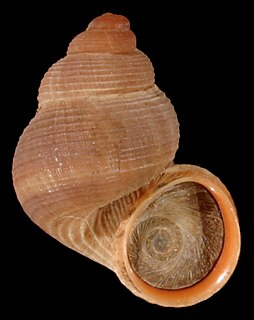
Hispaniola is an island in the Caribbean that is part of the Greater Antilles. Hispaniola is the most populous island in the West Indies, and the region's second largest in area, after the main island of Cuba.

Apayao is a landlocked province in the Philippines in the Cordillera Administrative Region in Luzon. Its capital town is Kabugao.

Santiago Rodríguez is a province in the northwest region of the Dominican Republic. It was split from Monte Cristi in 1948. The Santiago Rodríguez province has the Monte Cristi and Valverde provinces to the north, the Santiago province to the east, the San Juan and Elías Piña provinces to the south and the Dajabón province to the west.
Dermophis costaricense is a species of caecilian in the family Dermophiidae. It is endemic to Costa Rica and is found on the Atlantic versant of Cordillera de Tilarán, Cordillera Central, and Cordillera de Talamanca. Its taxonomic status is in need of a review.
Niceforonia nana is a species of frog in the family Craugastoridae. It is endemic to the Cordillera Oriental, Colombia, and found at 3,000–3,850 m (9,840–12,630 ft) asl.

Chondropoma is a genus of small operculate land snails, terrestrial gastropods in the subfamily Chondropomatinae of the family Annulariidae.

The Barahona big-scaled sphaero, also known commonly as the Barahona big-scaled geckolet, is a species of lizard in the family Sphaerodactylidae. The species, which is a very small gecko, is endemic to the Dominican Republic.

The Cordillera Central is the highest mountain range in the Dominican Republic and in all of the Caribbean, running through the heart of the island of Hispaniola.

The family Pomatiidae is a taxonomic family of small operculate land snails, terrestrial gastropod mollusks that can be found over the warmer parts of the Old World. In the older literature, this family is designated as Pomatiasidae.

The family Annulariidae is a taxonomic family of small operculate land snails in the superfamily Littorinoidea.

Paul Bartsch was an American malacologist and carcinologist. He was named the last of those belonging to the "Descriptive Age of Malacology.

Rohan David Pethiyagoda, is one of Sri Lanka's leading naturalists and a taxonomist on Freshwater fish of Sri Lanka.

Cubanola domingensis, or campanita, are small trees endemic to the Dominican Republic.

Abbottella is a genus of operculate land snails, terrestrial gastropod mollusks gastropod in the family Pomatiidae.

The La Toca Formation is a geologic formation in the northern and eastern part of the Dominican Republic. The formation, predominantly an alternating sequence of marls and turbiditic sandstones, breccias and conglomerates, is renowned for the preservation of insects and other arthropods in amber, known as Dominican amber. The formation is dated to the Burdigalian to Langhian stages of the Miocene period.

Abbottella calliotropis is a species of operculate land snail, a terrestrial gastropod mollusk in the family Pomatiidae.
Acodus is an extinct genus of conodonts.

The Venezuelan Andes montane forests (NT0175) is an ecoregion in the northern arm of the Andes in Venezuela. It contains montane and cloud forests, reaching up to the high-level Cordillera de Merida páramo high moor ecoregion. The forests are home to many endemic species of flora and fauna. Their lower levels are threatened by migrant farmers, who clear patches of forest to grow crops, then move on.

The Cordillera Oriental montane forests (NT0118) is an ecoregion in Venezuela and Colombia along the east slopes of the eastern cordillera of the Andes. The extensive region of submontane and montane forests includes distinctive flora and fauna in the north, center and southern sections. The ecoregion is home to numerous endemic species of fauna. Despite extensive changes due to logging, farming and ranching, large areas of the original habitat remain intact, and the ecoregion has rich biodiversity.

The Cauca Valley montane forests (NT0109) is an ecoregion in western Colombia. It covers the sides of the Cauca Valley, which runs from south to north between the Central and Western Ranges (cordilleras) of the Colombian Andes. The ecoregion is home to very diverse fauna and flora, due in part to its varied elevations and climates, in part to its position near the isthmus of Panama, the route along which North American species invaded South America and then diversified as they moved to the upper parts of the Andes. Little of the original habitat remains at lower levels, but higher up there are sizeable blocks of forest, some of which ate protected.

















